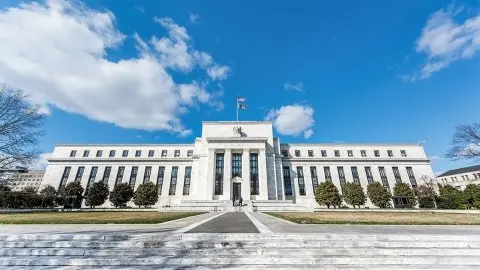Why the Riksbank won’t be the next central bank to cut rates
Policymakers in Sweden are wary about taking the repurchase rate back into negative territory, having only raised it in December. But with the relatively open economy set to take a hit from coronavirus, some alternative forms of easing looks likely
The open economy is at risk
Who will be the next central bank to cut interest rates? That’s the question markets are focused on, but the latest comments from Riksbank Governor Stefan Ingves and Deputy Governor Anna Breman suggest it won’t be them.
The duo has said that it is 'too early to determine' the impact coronavirus will have on the economy. But being a small, open economy, policy easing in Sweden is nevertheless fairly likely.
That poses increased risks for core inflation. January’s numbers have been dismissed as displaying temporary drags, but the virus is likely to hit the numbers through the first half of this year. As consumption dips, airfare prices will be first to take the hit, probably closely followed by leisure and entertainment.
This will lower core inflation, and plunging oil prices will be a further drag on the consumer price index with a fixed interest rate or CPIF. This also poses a risk given the ongoing wage negotiations due to be wrapped up in Spring. The labour market already appears to be weakening and inflation expectations among employee/employer organisations are muted.
Rate cuts aren't the priority
But having only increased the repurchase rate back in December, officials are clearly wary about lowering it again so soon. Don’t forget that December’s decision was motivated more by a desire to prevent negative rates becoming a permanent state of affairs than it was due to any economic strength.
That suggests any initial action is likely to be focussed on other tools. One of the key concerns globally is the impact the virus will have on small businesses and their cashflows. A rate cut is unlikely to do too much in that regard, which is why the Riksbank has hinted that it is looking at other measures to ensure that credit continues to flow to affected companies. As a result, the Bank might end up using some of the policies it used back in the crisis, including loan facilities.
A faster pace of bond-buying?
Quantitative easing also appears to be fairly high up the list of tools. That might include an increased rate of government bond purchases. Currently, policymakers are reinvesting roughly 50% of what will (or has) matured between April 2019 and December 2020 (most of this is centred on one large maturity towards the end of this year).
This policy means that the size of the bank’s government bond holdings will fall by the end of the year, relative to where they were in April 2019. However, policymakers said on Tuesday that the balance sheet shouldn’t reduce this year, which potentially opens the door to increase that rate of reinvestment of government bonds.
Policymakers are also hinting that the purchase programme could be expanded to include other assets, including corporate bonds.
Riksbank government bond holdings

Riksbank outlook
Some kind of easing looks fairly likely, but the real question is when will this take place.
The next Riksbank meeting isn’t until the end of April, by which time the epidemic is likely to have spread further. So while policymakers have hinted easing measures are not imminent, we can’t rule out some action before the formal meeting. Either way, rate cuts are unlikely to be the first line of defence.
SEK: Downside risks vs EUR but outperforming its G10 cyclical peers
The Swedish krona (SEK) currently screens well compared to its G10 commodity peers. The room for the Riksbank to ease policy is much more limited than the ample easing space available to the likes of the Federal Reserve or the Norges Bank, while the country has limited exposure to oil/commodity prices.
Indeed, within our G10 vulnerability score-card (which considers the impact of low oil prices and the risk-off environment) SEK looks like the best of the worst G10 cyclical bunch in the current challenging market environment. See The FX winners and losers from the oil price collapse for details.
If the Riksbank feels the need to ease monetary policy via unconventional measures rather than targeted measures, its likely preference for a modest QE rather than rate cuts should be less negative for the currency. The SEK should suffer less from a flatter curve (a result of QE) than compression in the front end interest rate differential and implied yield vs its peers (which would be a result of bringing the depo rate back into negative territory).
In the current environment of falling markets, the near-term EUR/SEK bias is clearly higher, yet SEK should continue outperforming its G10 cyclical peers (which are formed of high beta commodity currencies). Whether EUR/SEK converges to, and tests, the psychological 11.00 level is currently purely a function of the Covid-19 related dent to risk sentiment, rather than Riksbank's monetary policy set up.
Compared to 2018 and 2019 (the period of persistent pressure on SEK), the Riksbank currently does not necessarily stand out on the dovish side compared to other G10 central banks. As for NOK/SEK, we look for a further near-term downtrend.
This publication has been prepared by ING solely for information purposes irrespective of a particular user's means, financial situation or investment objectives. The information does not constitute investment recommendation, and nor is it investment, legal or tax advice or an offer or solicitation to purchase or sell any financial instrument. Read more
Download
Download article
10 March 2020
In case you missed it: Pandemic pandemonium This bundle contains 13 Articles